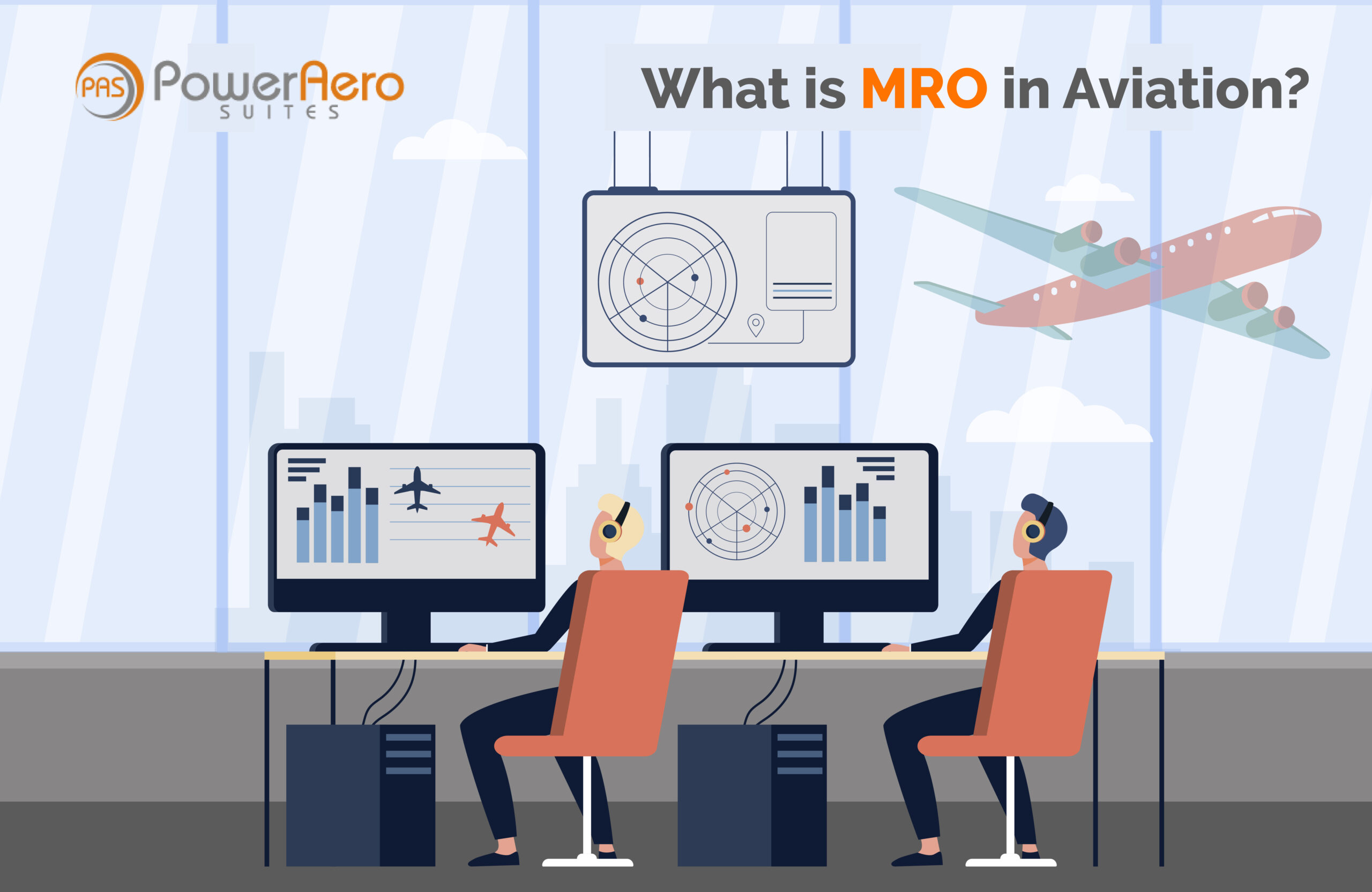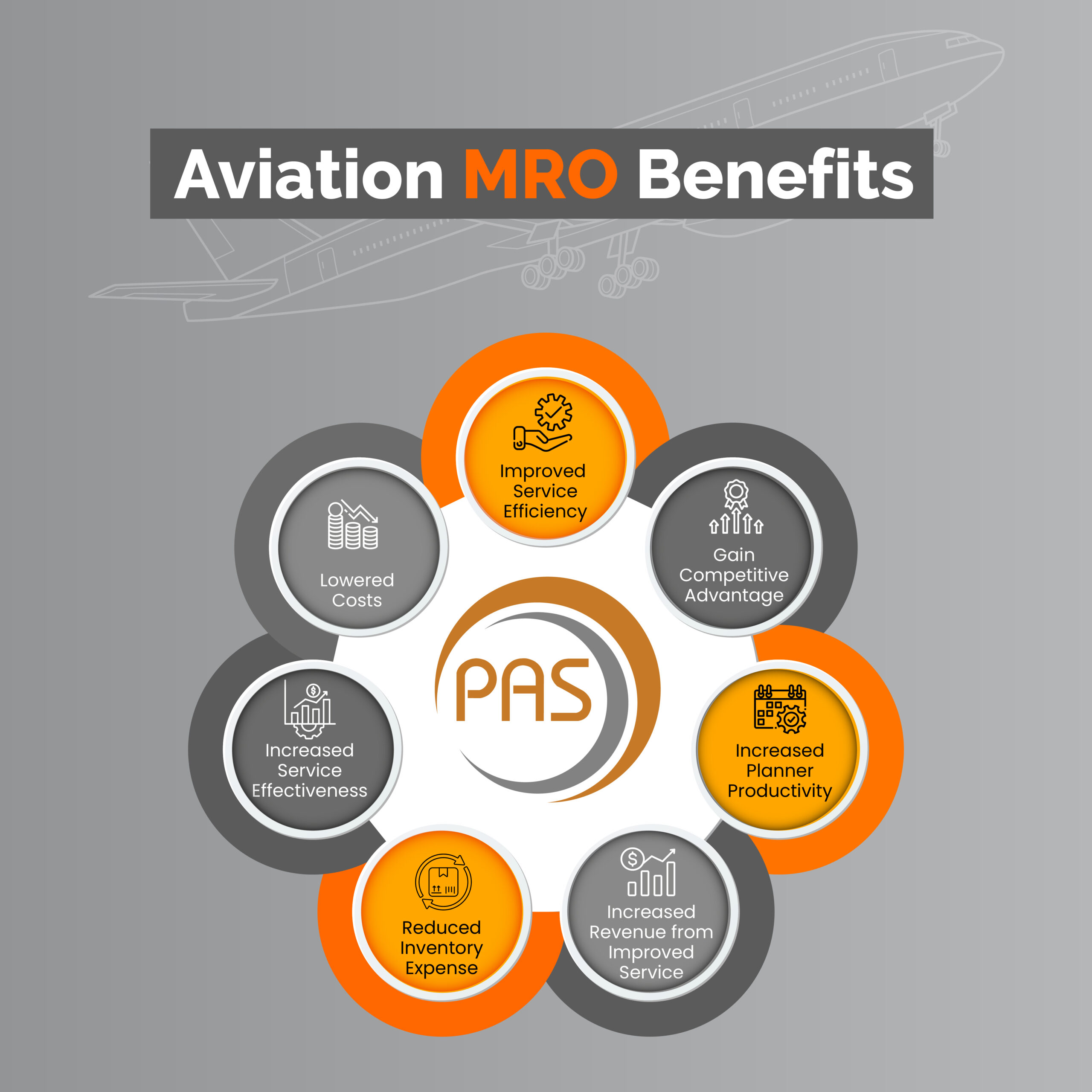We Understand That There is Not a Complete ERP Serving the MROs and Parts Brokers Businesses Today
PowerAeroSuites (PAS), have taken the time to understand the issues and build the best-in-class MRO ERP solution in the market today. Our ERP software is all-encompassing, bringing all functionality and information you need into one place. PowerAeroSuites (PAS) is the ONE aviation ERP software that provides that robust platform that will streamline your business processes. Leverage all the functionalities required to operate more efficiently and maximize returns.
Introduction

Within the complex realm of aviation, the acronym MRO carries substantial significance. Both aviation enthusiasts and seasoned professionals must possess a comprehensive understanding of MRO (Maintenance, Repair, and Overhaul).
This journal explores the intricacies of MRO in the aviation industry, revealing its fundamental nature, significance, obstacles, advancements, forthcoming developments, and applicability to the functioning of Power Aero Suites.
Understanding MRO in Aviation
MRO comprises an array of critical operations that are essential for the upkeep of aircraft, guaranteeing their airworthiness, and prolonging their operational lifespan. It necessitates strict adherence to safety protocols, meticulous attention to detail, and compliance with regulatory obligations.
Fundamentally, MRO seeks to maintain aircraft in pristine condition, thereby reducing periods of inactivity and optimizing safety. In addition to routine inspections, lubrication, and minor repairs, it encompasses more extensive overhauls and repairs when required.
Components of MRO
MRO consists of three main components: maintenance, repair, and overhaul.
- Maintenance: Regular inspections, servicing, and preventive measures to identify and rectify minor issues before they escalate. Maintenance tasks include checking fluid levels, inspecting avionics systems, and conducting visual inspections of aircraft structures.
- Repair: Addressing specific issues or damages to aircraft components, systems, or structures to restore functionality. Repairs may involve replacing damaged parts, repairing electrical systems, or fixing structural damage caused by wear and tear.
- Overhaul: Comprehensive inspection, refurbishment, and replacement of major aircraft components or systems to extend their lifespan. Overhauls are typically conducted at regular intervals or in response to specific maintenance requirements outlined by regulatory authorities or aircraft manufacturers.
Types of MRO Providers
MRO services are provided by a multitude of entities operating within the aviation ecosystem, including:
1. OEMs (Original Equipment Manufacturers):
MRO services are frequently offered by aircraft manufacturers, who utilize their knowledge and understanding of the complexities of their products to do so. OEMs possess a comprehensive understanding of the design, engineering, and performance attributes of aircraft, which enables them to provide specialized MRO solutions that are customized to particular aircraft models.
2. Independent MRO Providers:
Specialized organizations that provide MRO services autonomously for a wide variety of aircraft models and types. Independent MRO providers offer comprehensive MRO solutions to airlines, leasing companies, and aircraft operators by specializing in niche areas such as engine maintenance, avionics repair, or airframe overhauls.
3. Airlines' In-house MRO Facilities:
To maintain their fleet, optimize control over maintenance processes, and reduce operating expenses, some airlines operate their own MRO facilities. By having in-house MRO facilities, airlines can customize maintenance schedules to meet their specific operational needs, thereby reducing downtime and ensuring adherence to regulatory standards.
In addition to providing MRO services to third-party clients, these facilities may also generate supplementary revenue sources for airlines.
Challenges in MRO Operations
Although MRO operations are critical, they encounter numerous obstacles that have the potential to affect effectiveness, safety, and cost-efficiency. Several significant challenges are as follows:
- Stringent Regulatory Requirements: MRO operations are subject to stringent regulatory supervision by aviation authorities, which mandates adherence to a wide range of safety, maintenance, and quality requirements. It can be difficult and time-consuming to ensure regulatory compliance; ongoing monitoring, training, and documentation are required.
- Labor Shortages: A shortage of qualified labor, including technicians, engineers, and maintenance personnel, is afflicting the aviation industry. In the future years, it is anticipated that the demand for MRO services will increase, which will exacerbate the shortage of qualified personnel. Investments in workforce development, training programs, and recruitment initiatives to attract new talent to the industry are necessary to address labor shortages.
- Supply Chain Disruptions: To acquire consumables, components, and spare parts, MRO operations rely on an intricate network of suppliers, vendors, and service providers. MRO operations may be impacted by supply chain disruptions, including but not limited to shortages, delays, or quality issues, which can result in aircraft maintenance delays, cost overruns, and outages.
- Technological Complexities: As advanced avionics systems, composite materials, and digital technologies are integrated into aircraft, their complexity is increasing. To remain abreast of technological developments, continuous training, infrastructure investment, and the adoption of novel tools and techniques are necessary. MRO providers must remain current on emergent technologies to maintain their competitive edge and satisfy their clients' changing demands.
Innovations in MRO
Technological advancements are propelling innovation in MRO practices, facilitating improved levels of efficacy, dependability, and cost-efficiency. The following are some of the most significant innovations in MRO:
- Predictive Maintenance: It is the use of sensors, data analytics, and predictive algorithms to proactively schedule maintenance activities and anticipate equipment failures. By enabling MRO providers to detect potential problems before their escalation, predictive maintenance reduces disruption and optimizes maintenance schedules.
- Remote Monitoring and Diagnostics: Employing remote monitoring technologies to remotely diagnose maintenance issues, monitor aircraft systems, and collect real-time data. By enabling MRO providers to promptly detect and resolve problems, remote monitoring eliminates the requirement for in-person inspections and minimizes the duration of aircraft inoperability.
- Additive Manufacturing (3D Printing): Producing aircraft components, spare parts, and tooling on-site using additive manufacturing techniques. Compared to conventional manufacturing techniques, 3D printing permits MRO providers to produce intricate components with reduced lead times and expenses.
- Augmented Reality (AR) and Virtual Reality (VR): The utilization of AR and VR technologies to optimize the efficiency of inspection, maintenance, and training procedures. AR and VR tools offer MRO technicians interactive, immersive experiences, enabling them to virtually inspect simulated environments, visualize complex systems, and access digital manuals.
Future Trends in MRO
Further evolution is anticipated in the realm of MRO, propelled by initiatives centered around sustainability, automation, and digitalization. The following are some of the most significant developments influencing the future of MRO:
- Artificial Intelligence and Machine Learning: Leveraging artificial intelligence (AI) and machine learning algorithms to conduct extensive data analysis, detect patterns, and generate predictive maintenance suggestions. The utilization of AI-powered analytics empowers MRO providers to enhance maintenance schedule optimization, equipment failure prediction, and decision-making by leveraging real-time insights.
- Digital Twin Technologies: The process of generating digital representations of aircraft structures, systems, and components to optimize maintenance strategies, simulate performance, and monitor conditions. By enabling MRO providers to visualize, analyze, and predict the behavior of aircraft assets, digital twin technology facilitates proactive maintenance and performance optimization.
- Blockchain Technology: Integrating blockchain technology into the MRO supply chain to enhance transparency, traceability, and security. Blockchain technology facilitates the monitoring of parts, components, and maintenance activities throughout their lifecycle by enabling secure, tamper-proof record-keeping.
- Sustainable MRO Practices: Implementing sustainable MRO practices to minimize waste, reduce environmental impact, and maximize resource utilization. Recycled and refurbished aircraft components, energy conservation, and the incorporation of environmentally favorable materials and processes into MRO operations are all examples of sustainable initiatives.
Conclusion
In summary, MRO plays a critical role in the aviation sector by guaranteeing the durability, dependability, and security of aircraft. MRO practices will continue to evolve in tandem with the aviation industry, under the guidance of excellence, efficiency, and innovation.

By wholeheartedly adopting technological innovations and cultivating cooperation among industry stakeholders, MRO can effectively confront the forthcoming obstacles and advance towards an era of exceptional quality.
Power Aero Suites acknowledges the pivotal significance of MRO and parts traders in facilitating the maintenance requirements of the aviation sector. Our ERP software is designed to deliver optimal solutions to MROs and Parts Traders to help them operate at optimal effectiveness.
Contact us today!
